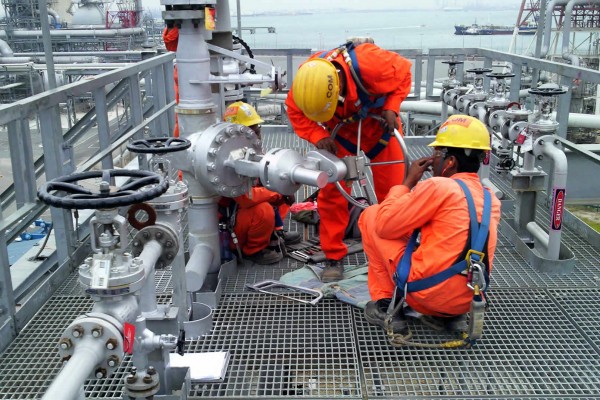Loading

The majority of this information is common knowledge for valve users,where the information applies to all the standard valves.When the VTI product is installed in applications for which they are designed will give hassle free service.
The End user is responsible for ordering the correct valves.VTI valves are to be installed in the observance of the pressure rating and design temperature.Prior to installation, the valves and nameplates should be checked for proper identification to be sure the valve is of the proper type, material, and is of a suitable pressure class and temperature limit to satisfy the application requirements.
Do not use any valve in applications where either the pressure or temperature is higher than the allowable working values. Also valves should not be used in service media if not compatible with the valve material of construction, as this will cause chemical attacks.
Valves should be inspected upon receipt to determine:
The Valve should be welded on to the line with a wedge in the fully closed position.Leaving the valve even partially open can cause distortion and leaking.
Verify the drawing to make sure that the valve has bi-directional sealing capacity.If the valve only has uni-directional sealing capacity,make sure it is installed in the pipeline in the correct orientation.
Single direction sealing Gate Valve have a nameplate on the side of the valve that has a relief hole or pressure equalizer.This should be high pressure side when the valve is closed.
They should usually be installed with the inlet below the valve seat.For severe throttling service,the valve may be installed so that the flow enters the top of the seat and goes down through it.Note that in this arrangement,the packings will be constantly pressurized.If the valve is to be installed in near throttling in near throttling service,verify with ValveTech Industries.Special Designs are available for throttling services.
The valve should be welded onto the line with the disc in the fully closed position. Leaving it even partially open can cause distortion and leaking. Allow time for the weld to cool before operating the valve the first time in the pipeline.
The preferred orientation of a globe valve is upright. The valve may be installed in other orientations, but any deviation from vertical is a compromise. Installation upside down is not recommended because it can cause dirt to accumulate in the bonnet and ma result into sluggish operation.
They must be installed such that the arrow on the body of the valve points in the direction of desired fluid flow.
All check valves should be installed at least ten pipe diameters away from upstream pumps, elbows, fittings or equipment.
ValveTech Industries check valves without springs should be installed with the bonnet up, and the angle of incline should be no more the 45° from horizontal. Also, the roll angle of the valve bonnet should be no more than 45° from side to side.
For vertical installation of a tilting check valve, special disc machining is required if vertical installation was not specified during inquiry stage.
Verify with ValveTech Industries if the flow meets the minimum flow requirements of the valve in question. Low flows can cause disc chatter, wear of the seat and disc, and erosion,resulting into leakage.
Check valves in multiple pump circuits may require special designs to prevent slug due to inadvertent pump trip. Verfiy flows, pump coast-down characteristics. Consult with ValveTech Industries to ensure trouble-free service.
Flush the pipeline before installing the valve. Debris allowed to remain in the pipeline (such as weld spatters, welding rods, bricks, tools, etc.) can damage the valve.
After installation, cycle the valve a minimum of three times and re-tighten if required.
For butt weld end valves ,Ensure that the valve is in the open position and the inside of the body bore of the valve body/body end is coated with a suitable spatter guard.
The post weld heat treatment must be localized. Make sure to keep intense heat away from the main portion of the valve (seats and ball). Do not cover valve in stress relieving blankets. The temperature of the main body section should not exceed the rated valve temperature.
In certain applications, it may be necessary to remove all internal 'soft' parts as they may get deformed /damaged.